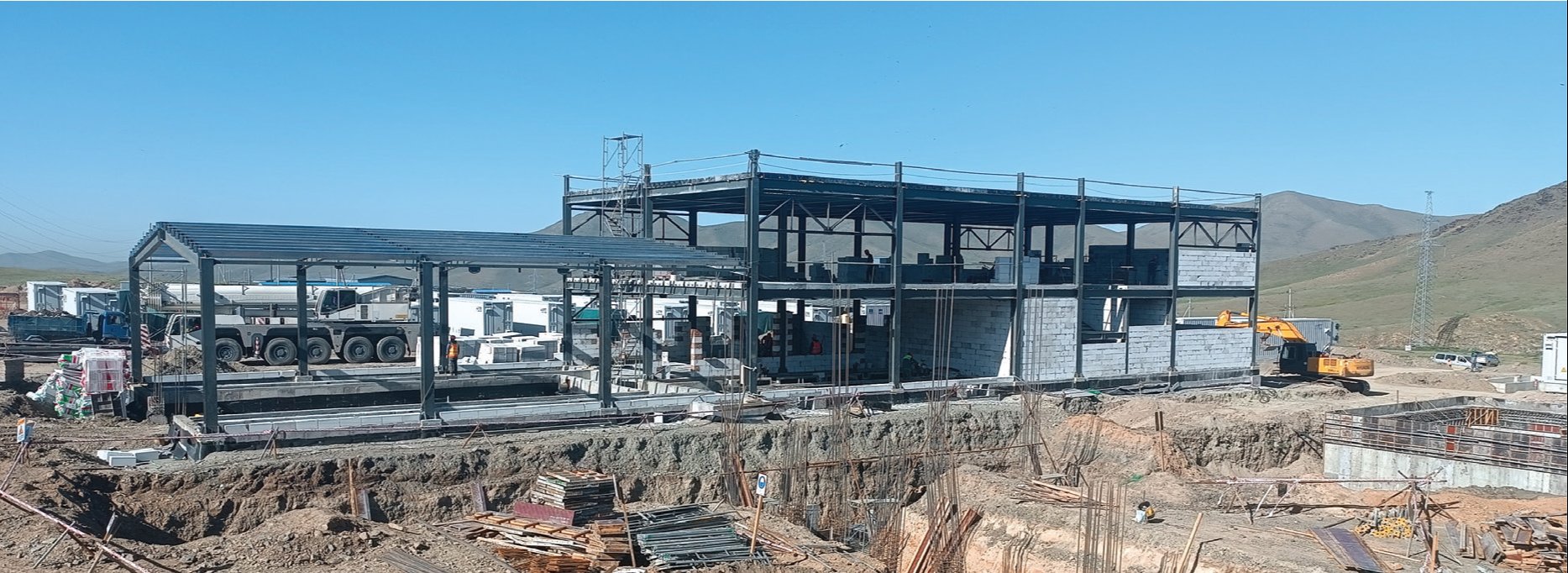
D. Oyunchimeg
Within the framework of Mongolia’s long-term development policy, “Vision-2050” and the Government’s “New Revival Policy”, the task of accelerating the revival of the energy sector is being successfully implemented. The Ministry of Energy has initiated and is implementing a project to install an 80 MW/200 MWh battery energy storage in the central energy system in order to improve the stability and reliability of power supply. The project was launched with funding of $114.95 million from the Asian Development Bank.
ENERGY STORAGE PROJECT The project will make it possible to compensate for sudden power shortages that may occur in the energy system and make regular adjustments. Project coordinator M. Naranbat said that the main goal of the project is to supply up to 80 MW of electricity to the central grid during peak periods and reduce electricity imports. He said that the battery storage system is simply a ‘power bank’ that as used by many people on a regular basis. The energy sector is experiencing a shortage of energy sources. This is due to investment and financing. Because of the global energy transition, investments in thermal power plants are declining. “Therefore, our country has set a goal to develop renewable energy. In this regard, we have launched an energy storage project. Renewable energy generation is not stable. Therefore, the energy storage system will store electricity at night, when demand is low, and supply it during peak hours,” Naranbat said.
Experts warn that this winter there is a high risk of power outages in the capital city. Therefore, in order to reduce this risk, it is urgent to expand the capacity of the energy system in coming years. Thus, this project will increase the amount of electricity supplied to the central grid from renewable sources. In addition, it will provide ancillary services to central energy, such as voltage regulation and power supply to prevent a complete failure of the thermal power plant. Of course, the project must deliver results and benefits. In this case, the project is expected to reduce the risk of power shortages and reduce dependence on energy imports. According to the project team, the project will reduce fluctuations in electricity load at the thermal power plant, supply clean energy during peak load periods, reduce carbon dioxide emissions by 46,800 tons per year and 842,000 tons per year by 2030, and contribute to achieving the national target.
INTEGRATED NETWORK AND BATTERY STORAGE
The project is financed by a loan and a grant from the Asian Development Bank. $100 million is provided in the form of a loan and $3 million in the form of a grant. The term of the loan is 25 years, and the interest rate is 2.225% per annum with a grace period for the first five years. The project was first launched in July 2020 by establishing a project implementation unit and signing a project management consulting services contract with RWE Technology International GmbH of Germany. At that time, the Chinese consortium ZTT&ZEST was also selected as the general contractor. Thus, it is planned to start construction works this spring and put it into operation in October. It is not by chance that the building was built next to the Songino substation located in the territory of the 32nd khoroo of Songinokhairkhan district. The reason is that the “power bank” takes up a lot of space. Project coordinator M. Naranbat said that the “Large Energy Storage Project” covers an area of 16 hectares and is located where most of the users live. He said: “Our battery will be charged from the central grid and renewable energy. The construction site is next to the substation.” In addition to charging from the central grid, the “power bank” will “store” excess energy at night. Thus, during peak hours, the battery storage system will discharge electricity into the central energy system. The “power bank” can operate at full capacity for 2.5 hours in the absence of electricity. B.Batjavkhlan, Construction Project Coordinator: “The construction took a lot of time, money and effort. Due to the geological assessment, there was a danger that in spring the frozen surface would thaw and flood the area. Therefore, an elevation was built with 41 cubic meters of earth. “Despite the heavy rains, we will work hard and finish the work within the contracted deadline,” says the project coordinator. The battery storage project is new for our country. Therefore, according to the project contractors, domestic subcontractors have been given ample opportunities and experience. Now that renewable energy and green technologies are rapidly developing all over the world, Mongolians must keep up with progress. With more “power banks” that can also be built in rural areas, we have more opportunity to supply energy and develop them.